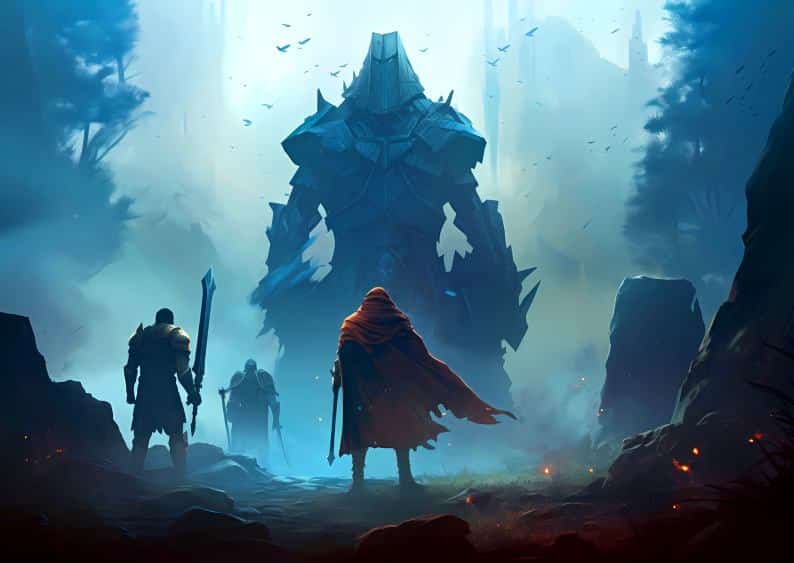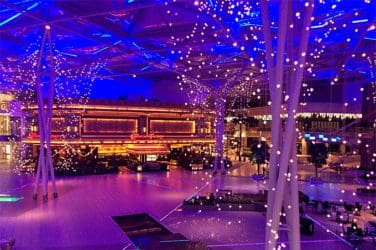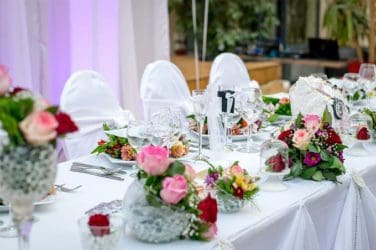WoW is not only a game; it is a living world filled with history and traditions, which is why it is so engaging. These are the tales of the heroes of Azeroth, the stories of each corner of the world, from the top of Stormwind to the bottom of the Undercity. But what is more significant for this world is their in-game festivals. These are the events based on the real-world traditions, which allows players to immerse themselves in the WoW’s diverse culture in a fun way. They are not merely games of finding treasures and attaining goals but are all about embracing the rich and colourful cultures that form the backdrop of this fictional world.
Significance of In-Game Festivals and Events
WoW has in-game festivals and events with several functions. They are useful in creating a sense of familiarity and the excitement that comes with it since they mimic real-life events such as festivities. Such festivals are not just temporary events within the game; they promote the active participation of the players the unity of the individuals, and provide exclusive opportunities for gaining certain in-game bonuses and bonuses, which cannot be received in any other way.
For most players, these events are a part of the game experience, as they allow them to switch to a different mode, as well as to enjoy the festive atmosphere within the game world. They also provide a backstory to the game and the different cultures of the world, Azeroth, making it more realistic. For players seeking to maximize their experience during these events, reliable wow raid carry services can be invaluable, helping them achieve their goals and fully enjoy the festivities.
Importance of Myth in WoW
Storytelling is the very foundation of World of Warcraft. The game is rooted in a mythos, and what is so striking is that everything feels so well-developed and fully-realized. All these myths set the backdrop of the game races, histories and wars. They add a layer of storytelling that takes the game from simple combination of quests and makes it a single, huge story. Making the events of the game connected to myth provides Blizzard Entertainment with a guarantee that each festival, each event, as well as every story arc is going to be meaningful and timeless and will pull the players deeper into the universe of Azeroth.
Role in Creating a Consistent Fantasy World
The concept of continuity is critical in world construction in fantasy and this is an area that WoW has really nailed by integrating myth into the game. Myths from the game form a logical and cohesive framework within which all the events that occur in the game are set. This consistency is important to keep up the fiction of the living world where each fest and event seems to be a part of game’s lore. It also allows the players to engage emotionally into the world, being sure that their actions are not arbitrary but rather have a meaning within the game’s context. Such mythic consistency is vital to sustain players’ interest and guarantee the realistic and magical nature of Azeroth.
Influence on Game Mechanics, Morality, Culture, Time, and Environment
It is rather evident that WoW’s mythic roots are embedded in the very fabric of the game. Mechanics are typically associated with myths; for instance, some game events repeat, which reflects cyclical myths and seasons. WoW is intrinsically moral in that it is a mythos, and much of the game, the quests, and the stories are based on heroism, sacrifice, and the duality of light and dark. The races of Azeroth are diverse in nature and this is evident in their mythology, which is evident in their buildings and language. Time in WoW is also constructed by myth, and some of the festivals being celebrated in WoW correspond to the historical and seasonal calendar. The environment also has myths, and its geography is awash with the history of pre-historic wars, sunken cities, and gods’ interferences. The intertwining of myth with the game design and structure helps to provide a dynamic experience that makes people come back.
Here are some key influences:
- Game Mechanics: The cyclical nature of in-game events mirrors the cyclical nature of myths and seasons, influencing how players engage with content.
- Morality: World of Warcraft’s quests and storylines often explore themes of heroism, sacrifice, and the eternal struggle between good and evil, reflecting its mythic foundations.
- Culture: The cultural diversity of Azeroth’s races is influenced by their unique mythologies, affecting everything from architecture to language.
- Time: Certain festivals in WoW mark significant historical or seasonal events, adding a mythic layer to the game’s timeline.
- Environment: Landscapes in WoW are steeped in myth, with areas that tell stories of ancient battles, lost civilizations, and divine interventions.
Myth as a Rationale for Player Actions
Myths offer a compelling narrative logic for player behavior in WoW. Actors performing during the festivals or while completing the games might be depicting historical events or portraying themselves as legends. This mythic context imposes a higher meaning and importance on their actions.
For instance, watching fire dances does not merely mean watching dances; it is about participating in the Midsummer Fire Festival as a way of respecting the spirits of fire and ensuring the protection of the world against evil forces. This mythic underpinning enhances the player’s sense of purpose and connection to the world, making their actions feel meaningful within the grand tapestry of Azeroth’s history.
Stylistic Profile of Game Objects, Tasks, and Characters
Many of WoW’s game objects, tasks, and characters contain elements of stylistic mythology that have been integrated into the game. Weapons and armor usually have engravings based on mythological objects, having their own history, which creates additional associations. Actions and missions often allude to legendary challenges, encouraging players to complete exceptional tasks, solve puzzle-like tasks, or fight powerful enemies. Characters, from the protagonists to the antagonists, are typically stereotyped, using mythic archetypes to generate a hero, a warrior, a magician, a monster, and so forth. This mythic theming is not limited to the decorations and costumes worn during the festivals, but the activities that are available during the festivals are also based on the mythos of Azeroth. As these mythic elements are integrated into every aspect of the game, WoW is able to craft a seamless experience that firmly places the player within the game’s fictional universe.
Cultural Environments
Coherence of Myth Schemes in Organizing Races
As it will be further explained, the history of myths is the most significant element defining each race’s identity and structure in WoW. For instance, the Night Elves are a very nature and moon-based society, as they are devoted to the goddess Elune. In the culture of the Dwarves, the creation myths and the Titans are sacrosanct. These myth schemes give the races structure and function and determine the societal organization, morality, and epistemology of the races. It is this deep integration of mythology that guarantees that all races are truly unique and feel so, thus adding layers of depth to the game’s cultural fabric and contributing to the creation of a rich experience for the players.
Differences and Conflicts Between Races
WoW’s races are often based on mythological backgrounds which result in differences and conflicts which makes the game’s story more rich. For instance, the Tauren is often depicted as an animist and this clashes with the Gnomes and their technology. The rivalry between Night Elves and Orcs is as old as time itself, as the two races’ histories and gods are completely different. These differences are not just cosmetic, they are incorporated into the game’s elements, such as political affiliations, territorial conflicts, and character relationships.
Key examples of these differences and conflicts include:
- Tauren vs. Gnomes: The animistic beliefs of the Tauren, who revere nature and the Earth Mother, frequently clash with the Gnomes’ technological advancements and reliance on machinery.
- Night Elves vs. Orcs: The ancient enmity between the Night Elves and the Orcs is rooted in their conflicting histories and mythologies, particularly concerning the Orcs’ desecration of sacred forests.
- Humans vs. Undead: The struggle between the Humans and the Undead (Forsaken) is deeply tied to the events of the Third War and the plague that turned Humans into Undead, creating lasting animosity and ongoing territorial disputes.
- Dwarves vs. Trolls: The historical conflict between Dwarves and Trolls is based on ancient territorial battles and the Dwarves’ excavation of sites sacred to the Trolls.
- Draenei vs. Blood Elves: Draenei’s flight from the Burning Legion and the corruption of the Blood Elves by demonic magic create a profound ideological and moral conflict between these two races.
Mythological Resonance and Depth
The use of mythos in WoW is a very good example of how depth can be achieved in a game’s world. Somewhere deeper, the authors of the game borrow from Nordic and Celtic mythologies, adding depth to the game that may not be immediately noticeable. This resonance is felt in the stories, the setting, and the tone of the game. For instance, the story of Arthas Menethil’s fall to the Lich King is a clear example of classical tragedy. The conflict between the Light and the Void also represents the global opposition between good and evil. This depth allows players to interact with it and makes them enjoy it more in a meaningful way.
World Creation and Fantasy
Fantasy digital games like WoW use several core features to create immersive experiences. These include richly detailed worlds, compelling narratives, and dynamic characters. The genre often draws on mythological and literary traditions to craft stories that resonate with players. Magic, heroism, and epic quests are staples, providing a framework for adventure and exploration. World-building is crucial, with environments designed to evoke




















